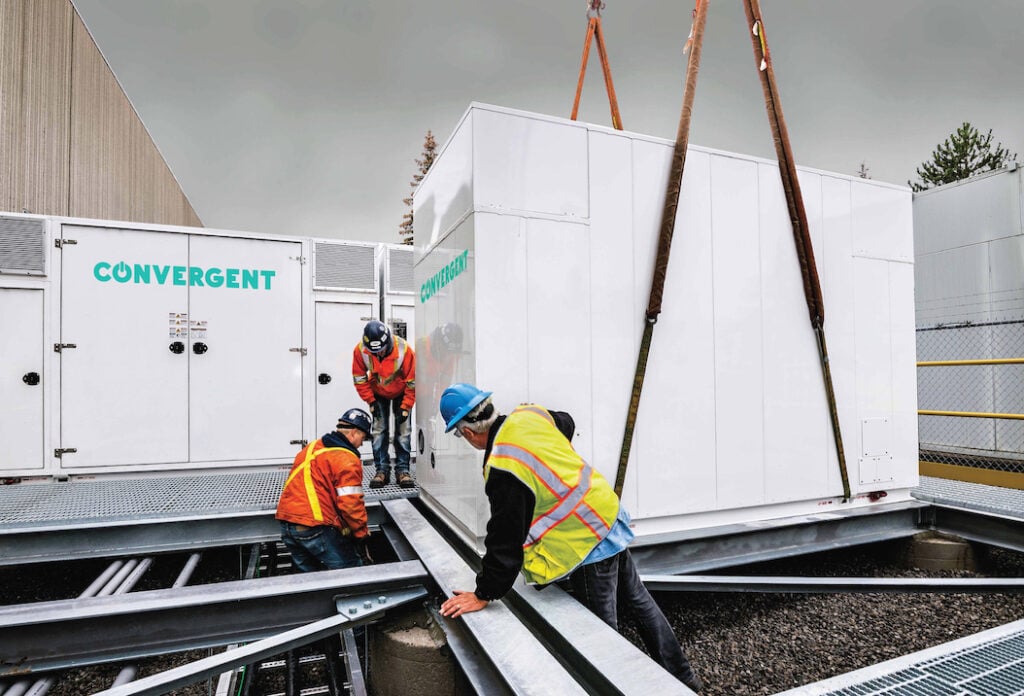
Maximising revenue streams for energy storage at distribution network level could have a positive impact for the energy system of Ontario, Canada, lowering costs for consumers by reducing the need for costly infrastructure build-out and upgrades.
A new report, commissioned by trade group Energy Storage Canada and authored by electricity market expert group Power Advisory explores some of the business models that could be applied, explains Justin Rangooni, Energy Storage Canada’s executive director.
Enjoy 12 months of exclusive analysis
- Regular insight and analysis of the industry’s biggest developments
- In-depth interviews with the industry’s leading figures
- Annual digital subscription to the PV Tech Power journal
- Discounts on Solar Media’s portfolio of events, in-person and virtual
As Ontario charts its path to a net-zero economy, it is clear the addition of renewable assets and a rising
electricity demand will reshape the province’s electricity distribution system, both from the increased
adoption of electric vehicles (EVs) and the wider electrification of the province’s industrial sector.
The question is how Ontario’s electricity distribution system should respond to the resulting changes.
There are a range of possible solutions, but increasingly energy storage is being considered and deployed
by location distribution companies (LDCs) and their customers as a viable non-wires alternative (NWA).
Energy storage is proven technology with the ability to provide the necessary peaking capacity,
operational flexibility, and reliability for Ontario’s net zero economy.
In 2021, Ontario’s Minister of Energy, the Hon. Todd Smith stated in his mandate letter to the Ontario
Energy Board (OEB) that, “[d]eveloping policies that support the adoption of non-wires and non-pipeline
alternatives to traditional forms of capital investment, where cost-effective, will be essential in
maintaining an effective regulatory environment amidst the increasing adoption of Distributed Energy
Resources.”
However, several legislative and regulatory barriers in the form of various government or OEB codes and
guidelines make the implementation of energy storage and other NWAs a challenge.
Unlike traditional distribution assets (i.e., poles and wires) energy storage can provide multiple services
and generate additional revenues via a single asset to offset the costs of operation and maintenance.
Revenue of this type, earned by an LDC outside of the provision of regulated distribution services, can
reduce the LDCs’ revenue requirements and is considered a revenue offset.
Unfortunately, these revenue offsets are often perceived as a risk because they are unpredictable.
Energy Storage Canada’s recent white paper, “Leveraging energy storage for distribution services: How
maximizing revenue streams can lower costs to electricity customers,” explores the perceived risks
associated with energy storage assets through an analysis of four ownership frameworks.
The paper concludes that regulatory flexibility regarding the ownership of NWAs best enables a customer-centric approach, minimising the costs of distribution services and maximising the value of other grid services (i.e., value stacking).
Engaging local distribution company customers, while reducing and mitigating risks, will enable the successful adoption of energy storage assets and support the development of a net zero economy with a reliable and flexible distribution system with the necessary capacity to meet Ontario’s future energy demands.
Overall, we’re encouraged by the current activities at the OEB and the IESO. We hope our paper will contribute to their ongoing analysis, as it highlights for us the importance of regulatory flexibility going forward if we want to optimise Ontario’s distributed energy system and provide cost-effective and reliable distribution services to the province’s customers.”
You can view the full paper here.
About the Author
Justin Wahid Rangooni is executive director of Energy Storage Canada, the national association for the energy storage industry in Canada, representing stakeholders along the entire supply chain. Justin is a lawyer with over a decade experience in the energy sector starting with being a Senior Policy Advisor for the Ontario Minister of Energy and then as a the Ontario Policy Lead for the Canadian Wind Energy Association and most recently Vice President, Policy and Government Affairs at the Electricity Distributors Association.

